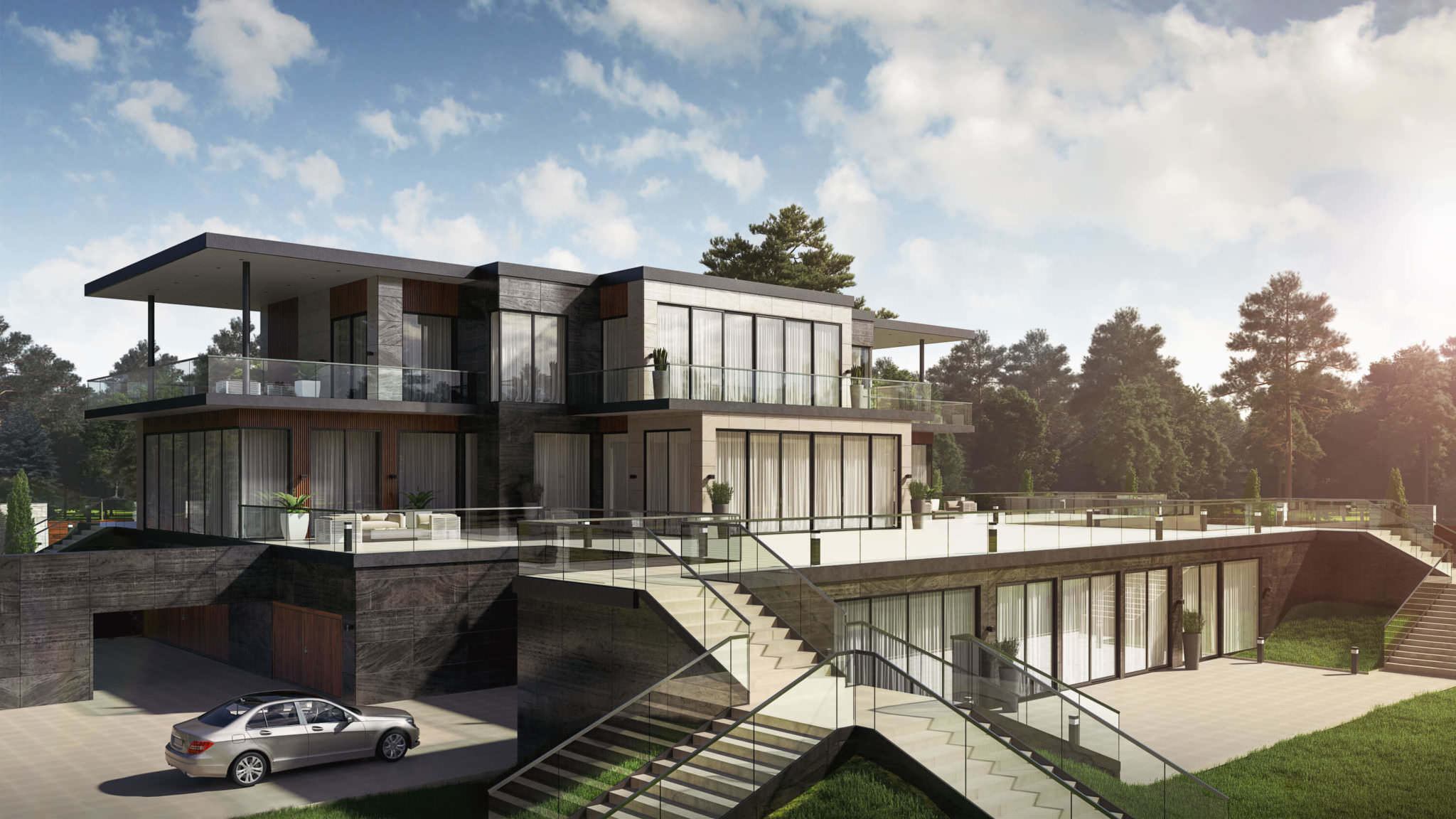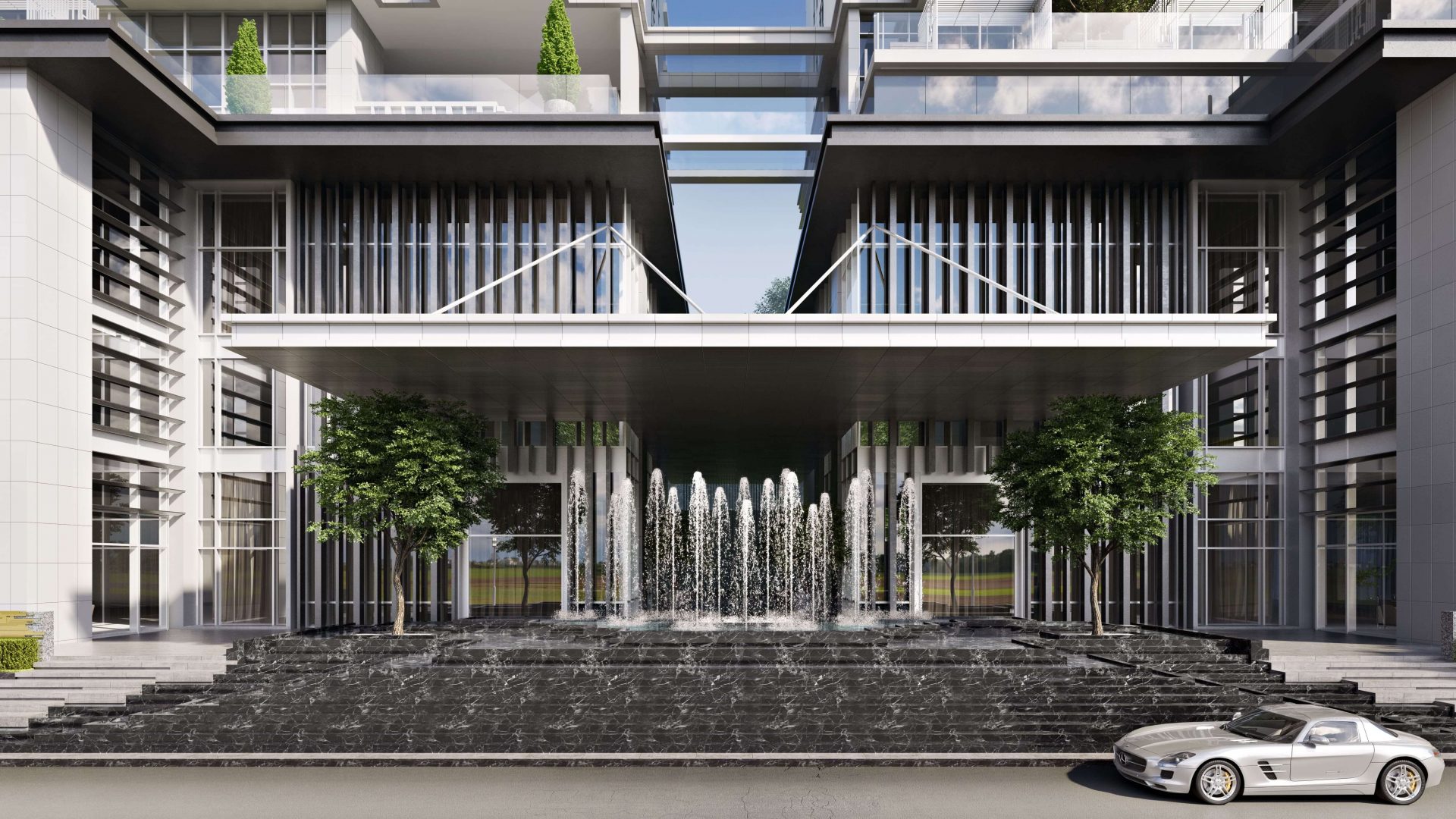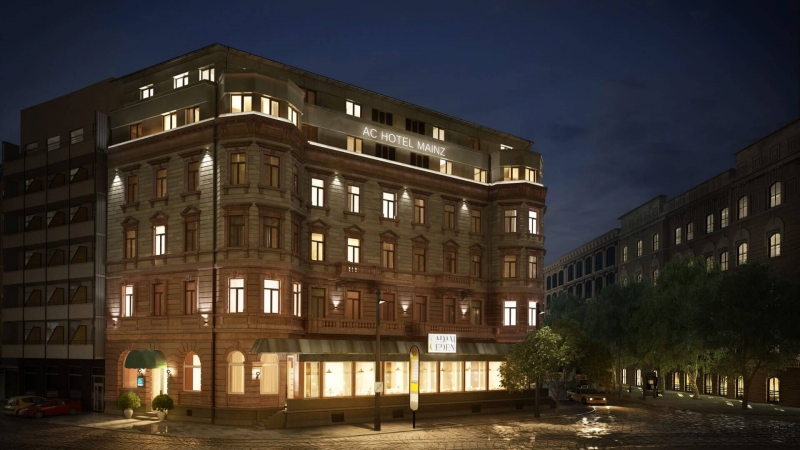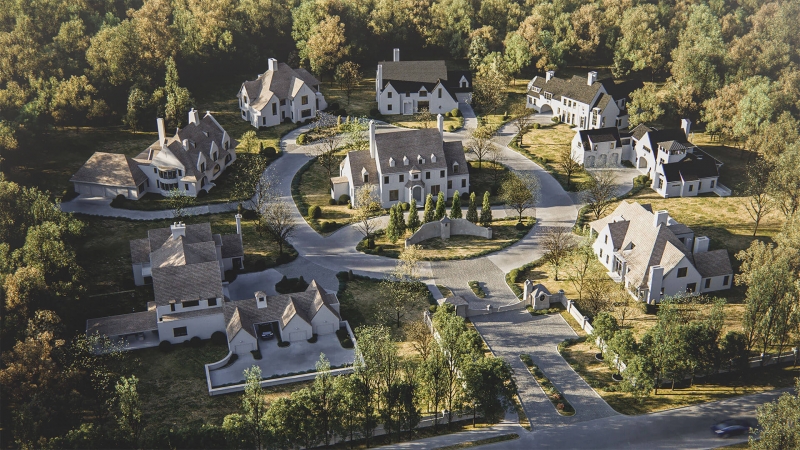Architectural render makes winning construction bids easier than ever before. It helps to stand out among competitors and make a strong impression — which is exactly what differentiates a good project from a winning one. Why? Well, a stakeholder receives plenty of documentation packs from bidders. In fact, he is practically drowned in estimates, plans and drawings, which look pretty much the same. So even if the architectural project is excellent, it may go unnoticed. Which means even though the Architect works hard day and night, the success is not guaranteed, and it’s still crucial to stand out.
There is an easy solution to that problem — 3D architectural renderings. With photoreal CGI, the Architect gains an edge over competitors. How so? Let’s see how 3D renders help to win construction bids.
#1. Architectural Render Helps to Avoid Guesswork

An architectural render allows stakeholders to understand the project ideas with one look. It is possible because CGI shows the future building in photoreal quality. So, the viewers do not have to do guesswork about how the building will look like – they see everything with their eyes.
Most often, the stakeholder cannot read drawings. Therefore, he needs to visualize the future building in his mind or to bombard the Architect with a billion questions — and then try to imagine the outcome anyway. For nothing but a picture can help to get a clear idea of what a project is going to look like.
Meanwhile, with architectural renders, the Architect can show the project in photoreal quality. In fact, a CG image can display every architectural solution and general look of the building. No need for guessing and asking questions, so the stakeholders will understand the concept clearly and quickly — and they will appreciate that the Architect went the extra mile for them.
#2. Architectural Render Can Present the Project in Context
The stakeholder needs to evaluate how the building will fit into the surroundings. While it’s clearly impossible with blueprints and sketches, professional 3D visualization can do the job impeccably. An architectural render can showcase the building in any context, be it a modern city with crowded streets or calm suburbs with perfect green lawns and stunning landscapes. This way, the stakeholders will see that the building will be in harmony with the existing architectural ensemble or natural landscape.
#3. Architectural Render Engages Emotions

Hamish Pringle, ex-director of the Institute of Practitioners in Advertising, wrote about an interesting marketing statistics. After IPA considered 1400 cases studies of effective advertising campaigns, they found out that ads speaking to customers’ emotions sell better than rational ads by twice — 31% vs. 16%.
So if the Architect engages the stakeholder’s emotions during construction biddings, the chances for the victory grow. But how to do this if the Architect has only formal documents and technical drawings? The answer is to use 3D architectural render technology which has all the means to evoke a strong emotional response.
To achieve the effect, an architectural 3d modeller uses modern software that allows to add a whole array of elements — weather effects, lighting, plants, animals, people, furniture pieces, cars, or household items. They will fit the scene seamlessly and bring it to life at the same time. But most importantly, the details can help the viewer to feel the atmosphere of a place. In such a way, the architectural project will stick to the stakeholder`s memory. One can easily forget drawings of a clever design, but a beautiful building with a marble-clad swimming pool and a gorgeous view out of the terrace — never.
#4. Architectural Render Shows Aesthetics and Infrastructure

The architectural 3D render highlights every aesthetic and functional benefit of a project. Where drawings are unable to explain the advantages, CGI comes in to convince the viewer with a powerful visual impact.
For instance, the Architect can develop a unique, mind-blowing design for a luxury hotel or a 3D rendering design for a restaurant. CGI allows the stakeholder to see this beauty in photoreal quality, ensuring that the hotel will attract tourists with its spectacular, Insta-friendly facade.
The architectural render also allows the stakeholder to see every benefit of the hotel infrastructure. With CGI, he can take a look at underground parking, a stylish haute cuisine restaurant, a spacious summer terrace for barbecue, large tennis courts and a swimming pool.
After seeing the visual power and functionality of the future hotel, the stakeholder will be sure that people will love to stay there. Why not invest in the project?
#5. Architectural Render Proves the Cost-Quality Balance

With a 3D render, the Architect can show that his offer is the best in the sense of cost-quality balance — even if the competitors submit less costly projects. The thing is that cheaper bids are not always the best ones. But to convince the stakeholder of it, the Architect needs proof.
Architectural 3D visualizations can clearly show that the result of construction will be worth it and will pay off. In particular, the stakeholder will see how usage of the high-end materials is actually a competitive edge. It will require little maintenance, resist weather, and look like a million dollars — and therefore make for outstanding advertisements.
With a photorealistic 3D architectural render, the Architect can stand out among other bidders and capture the attention of stakeholders. That is because 3D visualization conveys the visual aspect of the future building, shows how it looks in surroundings and highlights every benefit for the user. What is more, 3D renders engage the viewers emotionally and show the cost-quality balance of the design.
Want to learn how much your project costs? See how we evaluate 3D rendering projects
Want to get jaw-dropping presentation materials to showcase a project advantageously? Contact our team for professional 3D services — and see your design digitally brought to life.

Catherine Paul
Content Writer, Editor at ArchiCGI
Catherine is a content writer and editor. In her articles, she explains how CGI is transforming the world of architecture and design. Outside of office, she enjoys yoga, travelling, and watching horrors.









